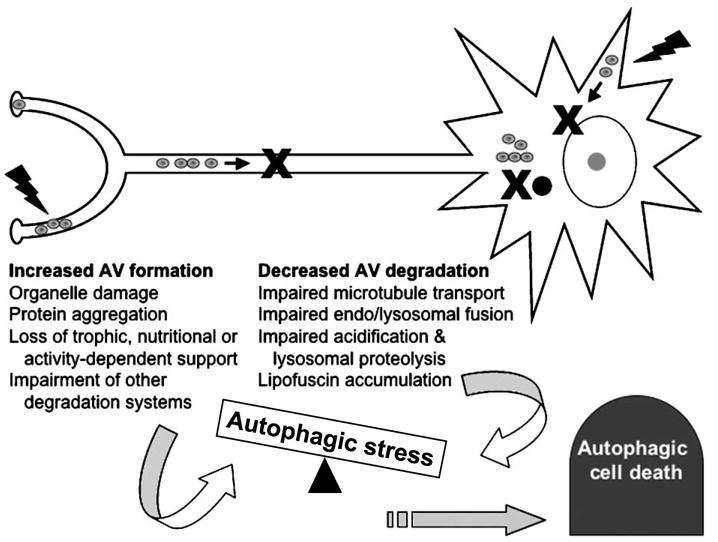FIGURE 3.

Autophagic stress, neurodegeneration, and autophagic cell death. Autophagy-related pathways may play important roles in degeneration of neuronal processes and in certain regulated forms of cell death. Increases in AV content within injured neurons can be caused by increased induction of autophagy or by impaired completion of lysosomal degradation. Most likely, both factors are involved in tipping the balance. While transient increases in AV content may reflect beneficial clearance of damaged or no longer useful cytoplasmic constituents, sustained alterations in susceptible cells result in autophagic stress. Autophagic cell death denotes an autophagosome-rich morphology of dying cells, without implying a particular role for autophagy. In some cases, this may reflect failure of autophagy to prevent cell death. In other cases, autophagy could be stimulated by signaling crosstalk involving a common upstream factor that also initiates cell death. Dysregulated autophagic processes could prove harmful to the cell through metabolic effects. Autophagy may also be directly harnessed by death programs to assist in the dismantling of large regions of cytoplasm.
